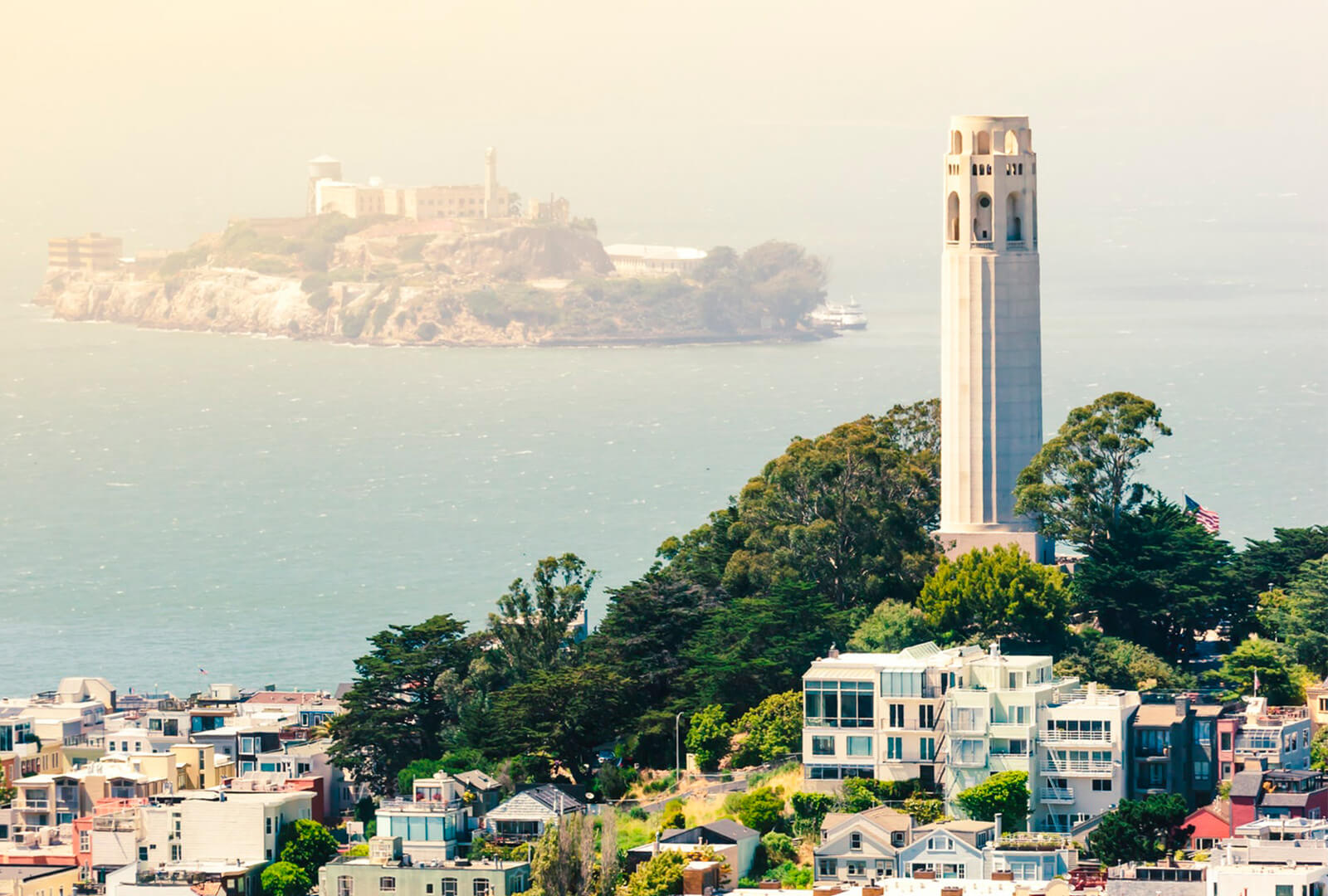As the sky brightens over San Francisco, two thousand nervous athletes board the sternwheeler San Francisco Belle. In sleek neoprene wetsuits, the competitors look out of place on this sumptuously appointed former Missouri riverboat casino. It’s the morning of the 2017 Escape From Alcatraz Triathlon, and they’ve come from 50 states and over 40 countries to swim, bike and run through the picture postcard that is the San Francisco waterfront.
The plan is this: the Belle will transport her jittery cargo to Alcatraz Island. There, the athletes will leap off the deck for a mile and a half swim to the city shoreline. They know the water temperature this morning is in the low-50s and they know how to swim against the strong tidal currents that will pull them off-course towards the Golden Gate. But the wild card today is the wind and accompanying waves, both of which are ominously beginning to pick up.
The athletes aren’t the only ones who are nervous this morning. Up on the top deck, three event organizers huddle around a phone, negotiating with the Coast Guard. They gauge the increasing winds and changing course conditions. There’s a terse exchange of words. With the wind speed rising, tough decisions have to made quickly.
Steve Katai A Second Attempt
On the other side of the ballroom, Steve Katai, senior event manager for CytoSport, sits waiting for the Belle to disembark. He’s one of two CytoSport employees racing along with sponsored pro triathlete Mauricio Mendez today. In 2004, Muscle Milk became the event’s marquee brand, providing protein shakes for recovery for all athletes at the finish line.
CytoSport began sponsoring Escape from Alcatraz in 1998; in 2004 Muscle Milk became the event’s marquee brand. Among other major races like the LA Marathon and the XTERRA triathlon series, Muscle Milk also sponsors more than 350 annual athletic events around the country.
Katai hasn’t put on his wet suit yet, and has a beanie pulled low over his ears. His eyes are bright with a mix of excitement and nerves. This isn’t his first Escape from Alcatraz Triathlon, but he’s betting it will be his first complete one.
“Funny story!” he says with a smile. “I raced in 2012, but when I came out of the water and went to get on my bike, it was gone!” In its place, he found a note from race organizers saying that his bike wasn’t up to code. The bike in question was an old beach cruiser he had borrowed from a local friend.
Triathlons have plenty of rules to prevent modifications from giving competitors unfair advantage. None of these were at issue with Katai’s clunker. But there are other rules about the maximum width of a bike’s handlebars and having brakes on both wheels. Race officials clearly didn’t see his choice as an advantage—more like a hazard for other riders. He was basically planning to race a pickup truck in the Indy 500.
“I think I set a precedent,” he says, now laughing at the memory. “Now the event pre-screens bikes!”
Game Changer
“The swim is what really makes this race,” Katai says. “This one’s very special because of where it is. It has a lot of history to it. Escaping Alcatraz, being at The Rock . . .”
Katai’s story is cut off by an announcement from the ship’s loudspeaker.
“Good morning athletes,” all the chatter among the competitors quiets down. “The Coast Guard and San Francisco City Police Marine Division have issued a small craft advisory,” the voice says in solemn tones. “Our lifeguards, our kayaks, our standup paddlers, our jet skis are having a hard time maneuvering in the bay. We will not be doing the swim today.”

2017 Escape from Alcatraz Triathlon swimmers aboard the Belle.
Eyes widen around the room as the athletes look at each other in disbelief. The tension that has been building on the boat for the past hour vaporizes. Some are visibly crushed, others clearly relieved. The announcement is made again, and it starts to sink in.
“This is not our choice, but this is for safety,” says the voice from the loudspeaker. “So at this time please exit the vessel. The buses are on their way. Get on the buses, go back to transition. Stay by your bike.” Even as a former casino, the Belle has rarely unloaded so many unlucky passengers. The 37th annual Escape from Alcatraz isn’t a triathlon anymore.
The decision was a difficult one. Because triathlons push athletes to extremes, natural forces like those in the San Francisco Bay have to be taken very seriously. Even in a normal year, the currents and wind cause some swimmers to veer off course. Small support boats often have to pluck them from the water and put them back on track so they can continue the race. “Last year, I had to get repositioned,” a man waiting for the bus says. “I was hoping to do it without that this time.”
It would be a nightmare scenario if two thousand swimmers jumped off the edge of the boat and then struggled against increasingly wild water as the weather picked up and larger wave bodies moved into the bay. They’d be in real danger of colliding with the small craft intended to protect them during the event
Organizers prepare contingencies for anything nature throws at the course. Race organizers have a plan A, B, C and D, according to James Leitz, the senior vice president at IMG Worldwide, which produces the event. This is the first time Leitz’s team has not gone with plan A. They tried to get the Coast Guard to permit a shorter swim, but the conditions were simply too dangerous.

